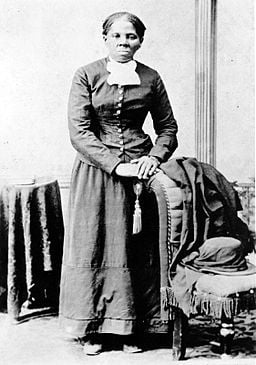For over 400 years, more than 15 million men, women and children were the victims of the tragic transatlantic slave trade, one of the darkest chapters in human history.

The Permanent Memorial unveiled on 25 March 2015 to mark the International Day of Remembrance of the Victims of Slavery and the Transatlantic Slave Trade, was designed by Rodney Leon, an American architect of Haitian descent. Located on the United Nations Visitors Plaza in New York, the memorial invites people everywhere to contemplate the legacy of the slave trade and to fight against racism and prejudice today.
“Canada has its own history of slavery – and it is a history we should never forget” Canadian Museum of Human Rights

Black Enslavement in Canada: The enslavement of African peoples was a legal instrument that helped fuel colonial economic enterprise. The buying, selling and enslavement of Black people was practiced in the early 1600s, and lasted until it was abolished in 1834. During those 200 years Canada was also involved in the transatlantic slave trade.
The Slavery Abolition Act 1833: but … in Canada, enslaved people older than six years of age were re-designated as “apprentices” and required to work, 40 hours per week without pay, as part of compensation payment to their former owners. Full emancipation was finally achieved at midnight on July 31, 1838. Ontario is the only province in Canada that has passed legislation proclaiming August 1 as Emancipation Day. Emancipation Day in Canada: Past, Present. and Future
An estimated 30,000 to 40,000 freedom seekers entered Canada via the Underground Railroad

The International Memorial to the Underground Railroad is a two part installation on either side of the Detroit River. Equally sited in Windsor and Detroit, the 22 foot high monuments face each other and pay tribute to the thousands that searched for freedom. The Tower of Freedom in Windsor, Ontario depicts the refugees’ arrival into Canada and their overwhelming emotion upon encountering freedom. The monument features four life-size bronze figures on the north side, two women with a baby and a man standing behind with his arms outstretched in praise. On the south side of the monolith a young girl holds a doll and looks back across the river.
Josiah Henson: Community leader and ‘conductor’ on the Underground Railroad.
Josiah Henson was an author, abolitionist, and minister. He was born into slavery, in Port Tobacco, Charles County, Maryland. Henson himself, his parents, siblings and family endured years of brutal, vicious, cruel treatment. In 1830, Josiah Henson with his wife and two youngest children walked more than 600 miles to Canada.

Once in Canada, Henson founded a settlement and laborer’s school for other fugitive slaves at Dawn, Kent County, Ontario. This was one of the final stops on the Underground Railroad. Henson repeatedly returned to the United States to guide an estimated 118 other slaves to freedom. “The Life of Josiah Henson, Formerly a Slave, Now an Inhabitant of Canada, as Narrated by Himself” Henson dictated his story to Samuel A. Eliot, who was a former Boston Mayor known for his anti-slavery views. Although Henson was an accomplished orator, he had not yet learned to read and write. The narrative provides a detailed description of his life as a slave in the south. Visit the Josiah Henson Museum of African-Canadian History
Harriet Tubman (born Araminta Ross, c. March 1822– March 10, 1913) was an American abolitionist and political activist. Born into slavery, Tubman escaped and made some 13 missions to rescue approximately 70 enslaved people. St. Catharine’s, Ontario was a focus of Tubman’s years here in Canada. During the American Civil War (1861 – 1865), she served as an armed scout and spy for the Union Army. In her later years, Tubman was an activist in the movement for women’s suffrage.

The National Underground Railroad Freedom Center is a museum of conscience, an education center, a convener of dialogue, and a beacon of light for inclusive freedom around the globe. This site has online learning resources and lesson plans.
Credits and Reference Materials
Rodney’s Journey Making The Ark of Return (Video)
“…the Ark of Return is designed to allow people, if they are not physically able to return, at least they can acknowledge the fact that people had suffered great tragic losses and experiences in order to make it possible for our lives to be where we are today.” Rodney Leon, Architect.
Download the Ark of Return brochure (pdf)
.Sale of Enslaved: Nova Scotia Archives Halifax Gazette 30 May 1752
.Natasha L Henry. “Black Enslavement in Canada”. The Canadian Encyclopedia, 09 June 2020, Historica Canada
.Underground Railroad Memorial in Windsor, Ontario. Dwight, Ed, 1933-, “Tower of Freedom (Windsor, Ontario),” Contemporary Monuments to the Slave Past. This work is licensed under a Creative Commons Attribution-NonCommercial-NoDerivatives 4.0 International License. https://creativecommons.org/licenses/by-nc-nd/4.0/
.Josiah Henson in 1877 (June 15,1789 – May 5, 1883), unattributed, Public Domain
.Harriet Tubman after the American Civil War. Library of Congress, from Washington, DC, United States. Public Domain
